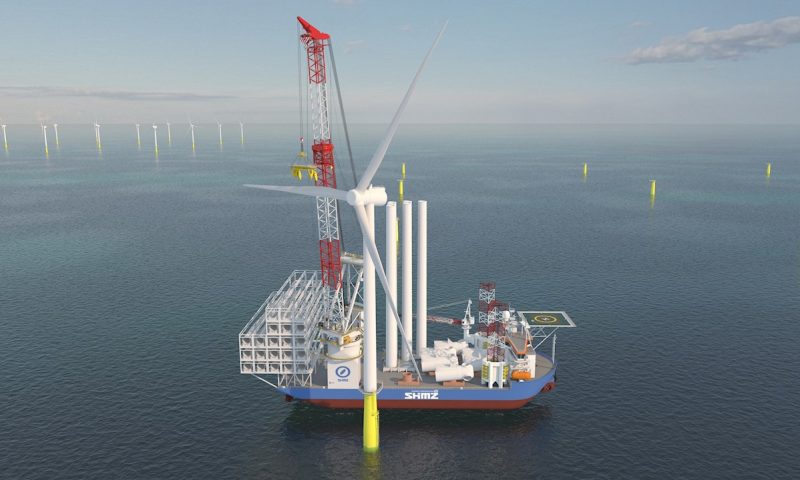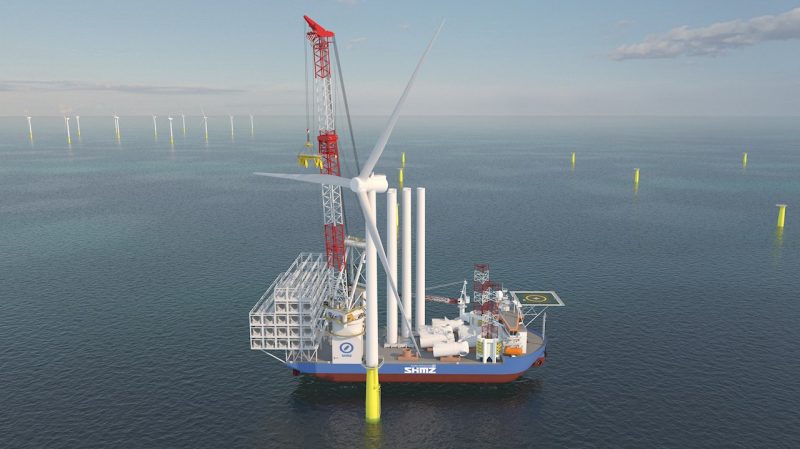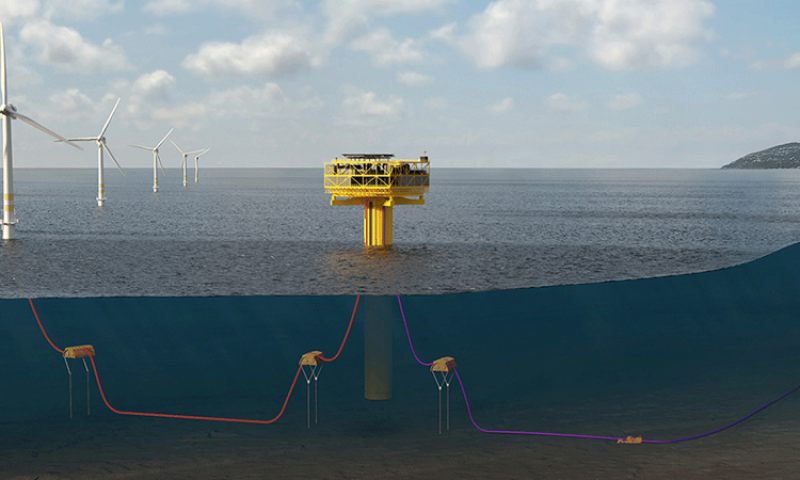
ABB Bags Contract for Japan’s First Super-size Wind Turbine Installation Vessel
ABB’s advanced power systems chosen for the first self-elevating wind turbine installation vessel built in Japan will support nation’s fast-expanding offshore wind sector
The 28,000-GT jack-up ship – a purpose-built, self-elevating wind turbine installation vessel (WTIV) delivered from a Japanese yard – will feature ABB’s advanced power and control technologies. The vessel, on order from builder Japan Marine United Corp., is due delivery to Shimizu Corp. in 2022.

Shimizu Corp.’s wind turbine installation vessel
Shimizu Corp.’s 142-meter newbuild will feature the greatest lifting and carrying capacity ever available on a wind turbine installation vessel. Using a 2500-ton crane capable of a maximum lift height of 158 meters, the ship will be able to transport and install seven 8MW wind turbines in a single voyage and operate in waters ranging between 10 and 65 meters deep.
ABB will deliver a closed ring configuration for the vessel’s dynamic positioning (DP) operations, enabling safe and predictable performance with high tolerance in the event of the power plant fault. Whether applied to newbuilds or retrofits, these solutions offer increased resilience to network disturbances, as well as timely and precise protection against power loss.
“ABB’s extensive experience with closed-bus systems for dynamically positioned vessels and wind turbine installation vessels in particular had been a decisive factor for this project,” said the Japan Marine United Corporation spokesperson. “We recognize that closed ring solutions improve operational flexibility and engine running efficiency, while increased protection against power loss is a vital safety advantage. ABB’s vast experience with these technologies has been a decisive factor for us.”
ABB’s scope of supply also covers the delivery and system integration of generators, high voltage switchboard system, the variable speed drives and motors for main propulsion and bow thrusters, and the Power and Energy Management System (PEMS).
“We are honored to work with Shimizu Corp. and Japan Marine United Corporation in delivering this landmark vessel to the Japanese market at this important stage of the country’s renewable energy strategy,” said Juha Koskela, Managing Director, ABB Marine & Ports. “Sustainability is a core commitment for ABB Marine & Ports deliveries, and we are thrilled to secure this benchmark order that will be key in supporting offshore wind energy developments in Japan.”
In line with ABB’s “Electric. Digital. Connected.” vision, this vessel will have the capability to leverage the ABB Ability™ Remote Diagnostic Services for Marine. The network uses remote equipment monitoring and data analytics to enable predictive maintenance, planned interventions or even remote technical assistance, supported from seven existing shore-based ABB Marine & Ports’ Collaborative Operations Centers staffed by ABB experts.
Public attitudes and policy in Japan are favorable to renewable energy, where government recently passed a law to allow construction of offshore wind farms beyond port-related zones. The go-ahead coincides with Global Wind Energy Council expectations that Asian offshore wind capacity will reach 165 GW by 2030. China will account for much of the growth, but analyst Wood Mackenzie recently forecast Japan’s offshore wind capacity would expand to 4 GW by 2028 – a 62-fold increase from 2018.
Delivering on these expectations is challenged by the sharp increase in water depths close to the Japanese coastline, which limits areas suitable for installing wind turbines. Maximizing the energy output requires large wind turbines, the installation of which, in turn, calls for large WTIVs. With most such vessels tied up with duties in European waters, Japan has an urgent need for high performance WTIVs, purpose-built to do the job.













